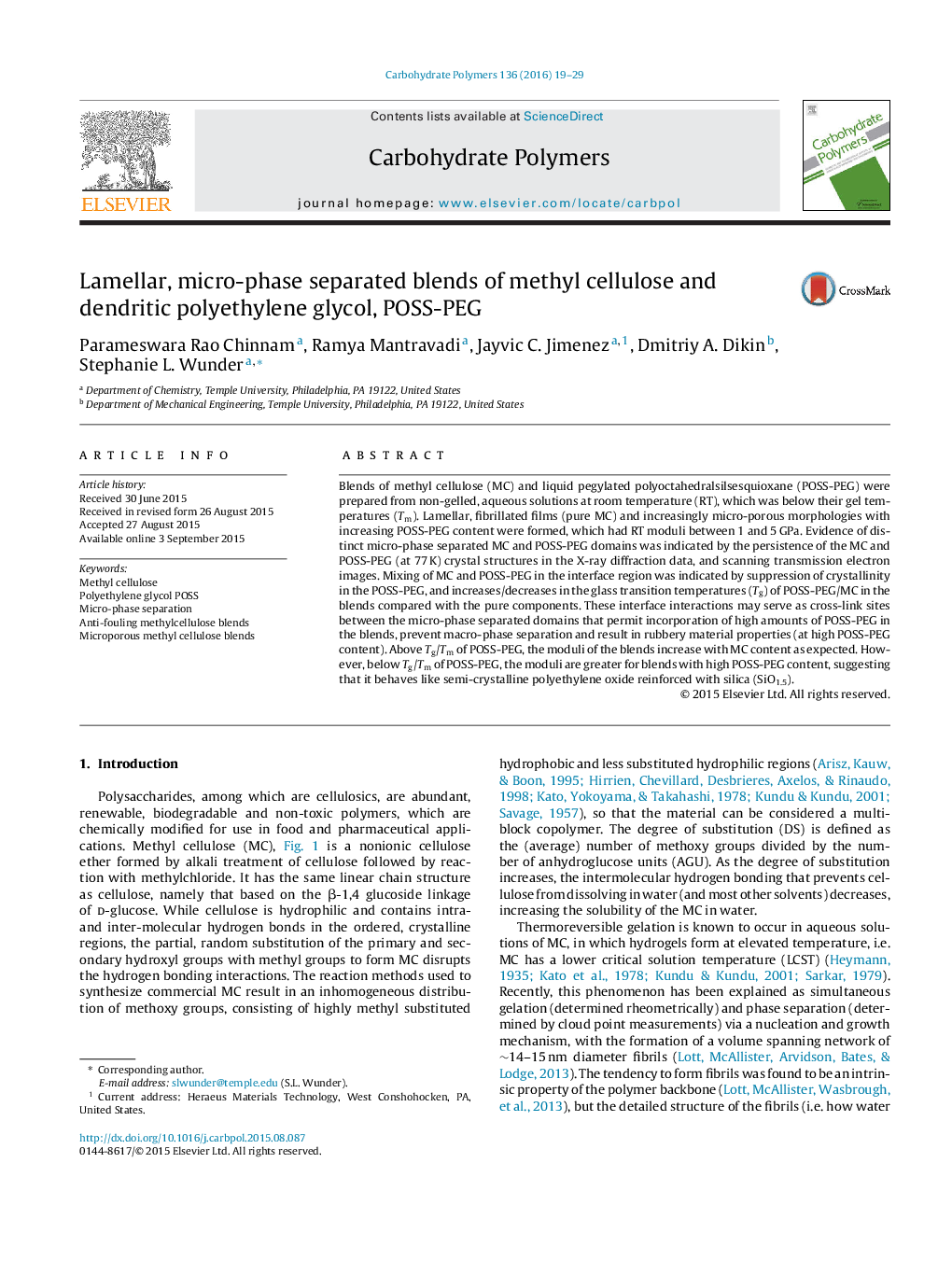| Article ID | Journal | Published Year | Pages | File Type |
|---|---|---|---|---|
| 7786219 | Carbohydrate Polymers | 2016 | 11 Pages |
Abstract
Blends of methyl cellulose (MC) and liquid pegylated polyoctahedralsilsesquioxane (POSS-PEG) were prepared from non-gelled, aqueous solutions at room temperature (RT), which was below their gel temperatures (Tm). Lamellar, fibrillated films (pure MC) and increasingly micro-porous morphologies with increasing POSS-PEG content were formed, which had RT moduli between 1 and 5Â GPa. Evidence of distinct micro-phase separated MC and POSS-PEG domains was indicated by the persistence of the MC and POSS-PEG (at 77Â K) crystal structures in the X-ray diffraction data, and scanning transmission electron images. Mixing of MC and POSS-PEG in the interface region was indicated by suppression of crystallinity in the POSS-PEG, and increases/decreases in the glass transition temperatures (Tg) of POSS-PEG/MC in the blends compared with the pure components. These interface interactions may serve as cross-link sites between the micro-phase separated domains that permit incorporation of high amounts of POSS-PEG in the blends, prevent macro-phase separation and result in rubbery material properties (at high POSS-PEG content). Above Tg/Tm of POSS-PEG, the moduli of the blends increase with MC content as expected. However, below Tg/Tm of POSS-PEG, the moduli are greater for blends with high POSS-PEG content, suggesting that it behaves like semi-crystalline polyethylene oxide reinforced with silica (SiO1.5).
Related Topics
Physical Sciences and Engineering
Chemistry
Organic Chemistry
Authors
Parameswara Rao Chinnam, Ramya Mantravadi, Jayvic C. Jimenez, Dmitriy A. Dikin, Stephanie L. Wunder,
